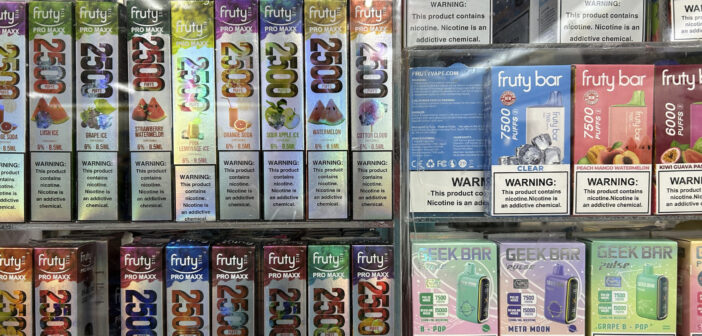The Bethlehem Area School District hopes to mitigate the vaping epidemic among adolescents by pursuing a $377,604 state grant to fund the installation of vape detectors in middle schools.
During the Bethlehem Area School Board’s Curriculum Committee meeting on Sept. 9, members discussed the grant application process. The funding, provided by the Pennsylvania School Safety and Security Committee, aims to reduce the number of students vaping at school.
According to the Centers for Disease Control and Prevention, e-cigarettes were the most commonly used tobacco product among middle and high school students in the U.S. in 2024, with 3.5% of middle school students, and 7.8% of high school students reported using vaping devices.
Michael Faccinetto, the president of the school board committee and father of three students in the district, said vaping is a major concern in middle schools and poses a distraction to students.
“Kids are finding ways to get out of class, and it’s not just about nicotine anymore,” Faccinetto said. “Some students are using THC vapes, which compounds the problem.”
He said the district views vape detectors as a deterrent and a tool for holding students accountable.
Karen Pooley, a member of the school board said one of the challenges the district is facing is finding the right company to supply the detectors.
According to the Vape and Safety Devices Bid Document, the district is required to solicit bids from multiple companies.
She said even if the district wants to pick the vape detector company supplier itself, it’s important to be conscious of the cost to ensure they are doing their “due diligence” and spending taxpayer dollars responsibly.
Pooley said the district plans to install the detectors in phases, beginning with a few middle schools and later expanding across the district.
She said the process isn’t about finding the cheapest option, but rather ensuring they’re acquiring the best product to meet their needs.
“We hope to roll out these devices fairly quickly,” Pooley said. “From what I understand, they’re relatively easy to install, similar to a smoke detector.
She said the real challenge will be evaluating the detector’s effectiveness throughout the year.
She said vape detectors were previously introduced in high schools and had some success, but many kids will likely find ways to get around them.
Pooley said despite her concerns, she’s optimistic that advances in technology and stricter enforcement policies could make a difference this time.
“There’s always that battle between students and faculty — students trying to get around the controls and faculty trying to enforce them,” Pooley said. “We’ll have to monitor that dynamic closely.”
Michael Recchiuti, a member of the school board, said if the process is approved, students will be able to go to the bathroom without being “influenced” by other kids vaping.
“It restores confidence in parents that the bathrooms their children are using will be safer,” Recchiuti said.
Faccinetto also said he thinks the detectors will help minimize the social aspect of vaping.
“We might not stop the students who are already vaping, but hopefully, we can prevent new students from starting,” Faccinetto said.
The board members unanimously voted to approve the grant application at a meeting on Sept. 23.






Comment policy
Comments posted to The Brown and White website are reviewed by a moderator before being approved. Incendiary speech or harassing language, including comments targeted at individuals, may be deemed unacceptable and not published. Spam and other soliciting will also be declined.
The Brown and White also reserves the right to not publish entirely anonymous comments.